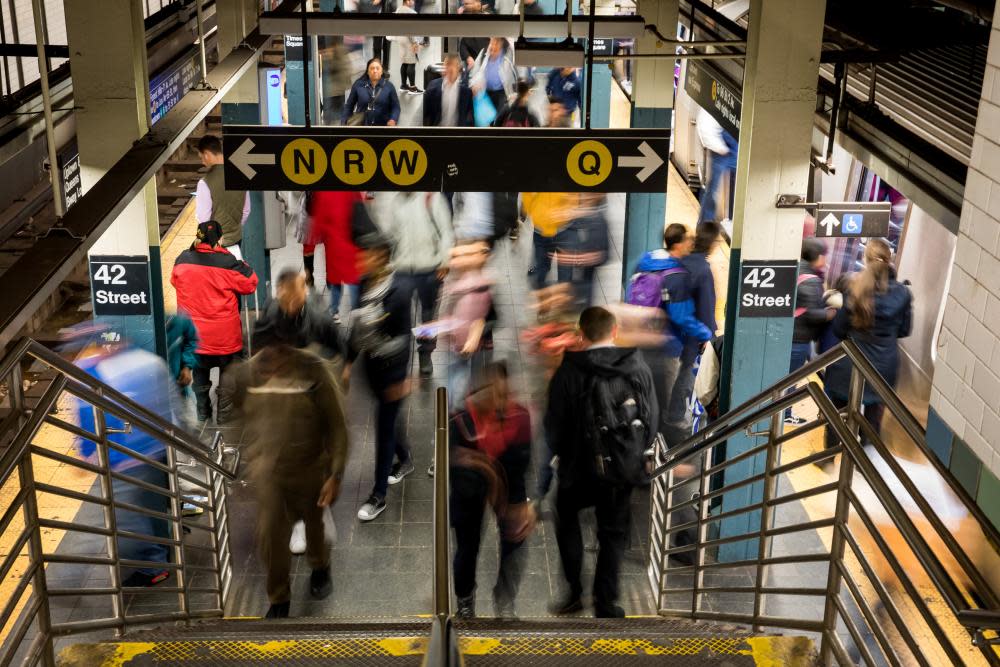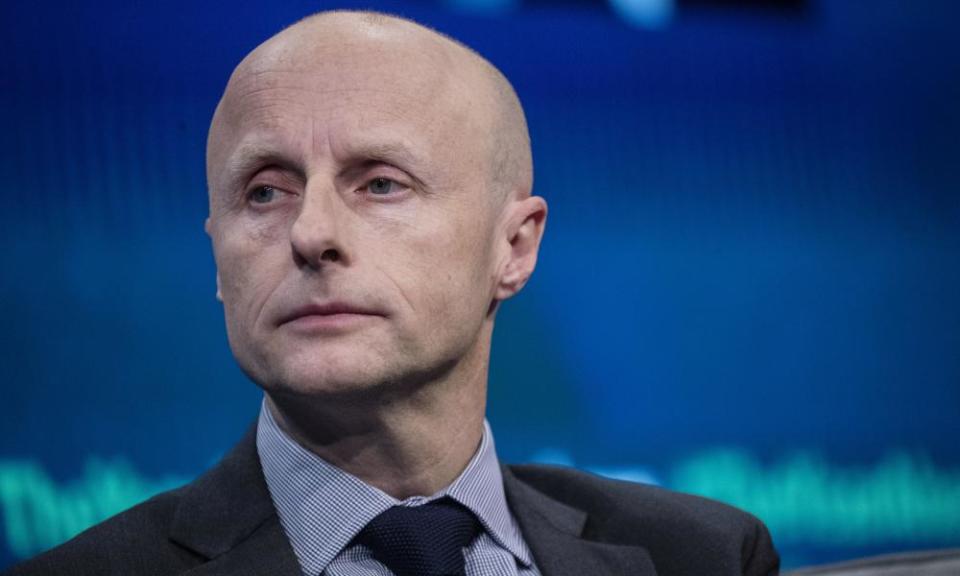'A huge loss for New York': dismay at subway chief Andy Byford's sudden exit

Andy Byford’s two years in charge of the New York City subway system saw dramatic improvement in an ailing underground train network, and led to the British transport expert becoming an unlikely minor celebrity.
Byford, 55, has been feted by transport advocates, lauded by politicians, and has even become his own meme, hailed as “train daddy” by admiring subway riders at their wits’ end with delays, mishaps and service suspensions.
Related: Taken for a ride: can New York's decrepit subway system be saved?
It meant Byford’s sudden departure, announced on Thursday after rumors that he had repeatedly clashed with New York’s powerful state governor, Andrew Cuomo, was met with dismay.
“It’s a grim day. This is a huge loss for New York, it’s a significant blow to New York,” said Nick Sifuentes, the executive director of the Tri-State Transportation Campaign, a not-for-profit organization that lobbies for better public transport.
“But a lot of what he started will continue.”
Byford became the president of the New York City Transit Authority following the 2017 “summer of hell”. In June and July that year, as temperatures above and below ground soared, two trains derailed, injuring dozens, while passengers found themselves frequently trapped in long-delayed, sweltering trains.
Just 65% of weekday trains were running on schedule, and the subway became better known as a home for pizza-dragging rats and flash floods than a reliable mode of transport for a world-leading city carrying New Yorkers on more than 5 million journeys a day.
A hands-on approach from Byford immediately won over transport advocates, who had been campaigning for years for the system to be improved.
Byford, who previously ran the subway system in Toronto and also worked on the London Underground, became a frequent presence at subway stations, where he would welcome riders and on occasion could be found sweeping platforms and picking up litter. After previous years of inaction, verging on abandonment, from politicians, it was a welcome example of someone taking responsibility.
Byford’s dedication led to an anonymous admirer creating thousands of stickers at the end of 2019, bearing a picture of Byford’s face superimposed on to the front of a subway car.

“Train daddy loves you very much,” read the text above the mash-up. The stickers apparently first appeared in Brooklyn, and soon were being displayed at subway stations across the boroughs.
Sifuentes said: “That says something. It says that New Yorkers kind of feel like there’s an adult in the room. Yes, [the subway] is a problem, but somebody is fixing it and that somebody is a competent person. And now I think a little bit of that sense is going to be gone.”
Byford’s appointment came amid years of bickering between Governor Cuomo, and New York City’s mayor, Bill de Blasio. Byford may ultimately have been felled by the toxic relationship between city and state.
Cuomo, a charismatic but divisive Democrat who has governed New York state since 2011, is known to have clashed with Byford. Byford, reportedly sick of Cuomo’s meddling in the subway, offered his resignation in October 2019, according to Politico, only to reconsider. But it seems the final straw may have come after Cuomo reorganized the MTA, the state transport body, stripping Byford of some responsibilities. In his resignation letter this week, Byford referenced his “reduced” role.
After years of drift, New York’s creaking subway system did improve under Byford. The number of trains running on time increased to 80% – the highest since 2013 – and major incidents have declined.
Most important, however, was Byford’s wide-ranging plan to improve the entire subway and bus network, “Fast Forward”, which was rolled into a $51.5bn transport initiative at the end of 2019.
“We’re not where we need to be, we’re not in the high 90% [of on-time train service], where you would expect a functional subway service to be, but the indicators are moving very much in the right direction,” Sifuentes said. “And he deserves a lot of credit for making that happen.”
For all Byford’s successes, it would be a stretch to say all is well with the subway. Increased ticket prices are a consistent gripe among residents – although the current $2.75 flat fare to ride anywhere in the city 24 hours a day is dwarfed by subway fees in other parts of the world – and passengers are still frequently frustrated by delays, breakdowns, dirt and a system a long way from matching the world’s best.
Still, on Thursday some riders praised Byford for a job well done done. John Kenny, who lives in Manhattan, said he was sad to see him go.
“He was trying to do all the right things, he was a good spokesperson, I can’t knock him for any of that. The problem is he’s up against a bureaucracy that doesn’t support him,” said John Kenny, 68, of Manhattan.
Asked if he was worried about the subway now Byford has gone, Kenny said: “I don’t think it could get much worse.”
Byford’s legacy will be his Fast Forward plan, which will bring in 650 new subway cars, add more wheelchair accessible stations, and improve signalling – some of the subway’s infrastructure dates back to the 1930s – so more trains can run in tighter intervals on the same track.
If properly implemented, Byford’s vision will outlast him.
“When we look back at Andy’s tenure in 10 years, we’re going to be able to say that while he was here for a very brief time, it was a lynchpin time,” Sifuentes said.
“A lot of things that needed to get done started getting done – by him.”

